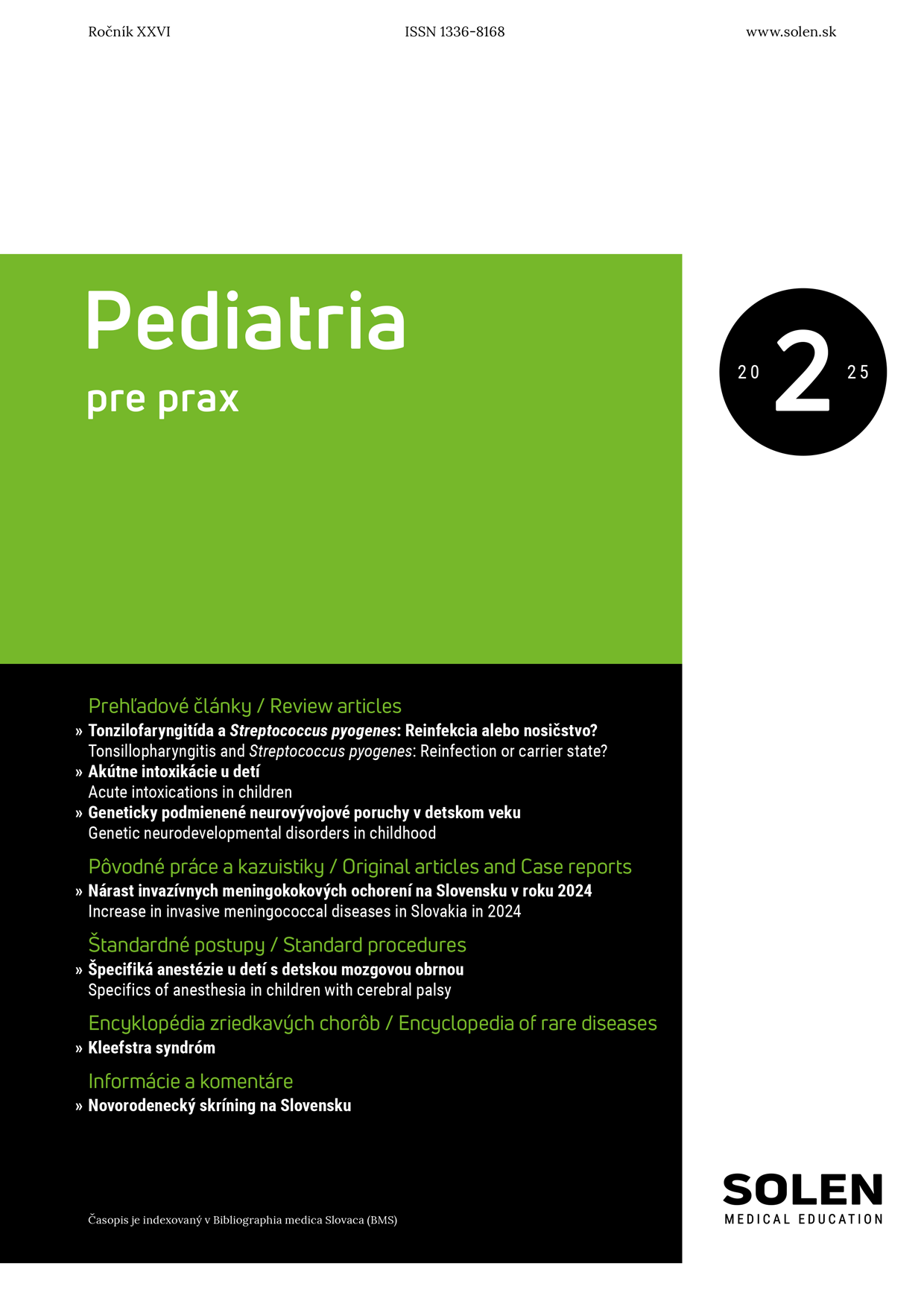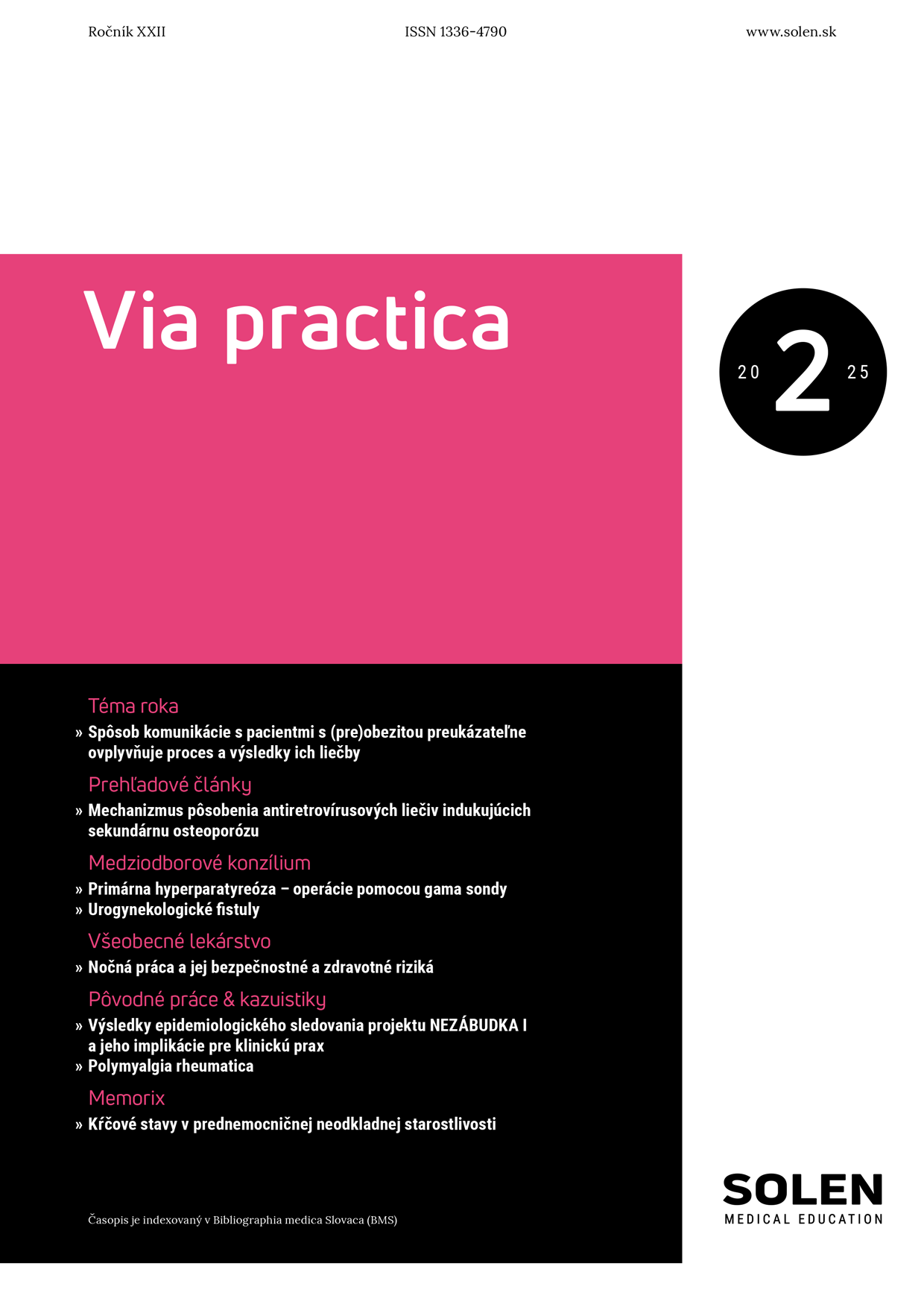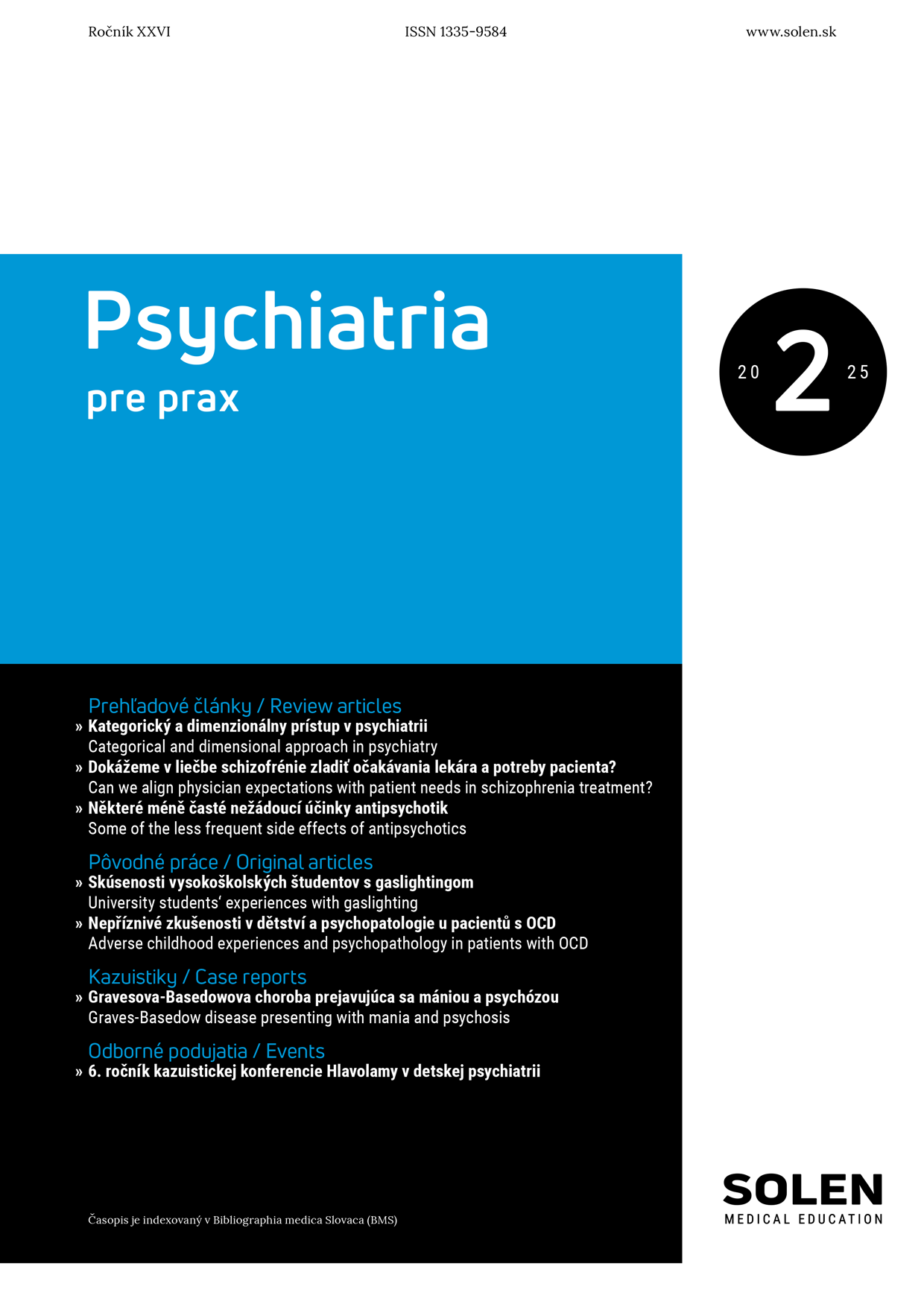Via practica 1/2008
REUMATOIDNÁ ARTRITÍDA – KLINICKÝ OBRAZ, DIAGNOSTIKA A LIEČBA
prof. MUDr. Jozef Rovenský, DrSc., FRCP
Reumatoidná artritída (RA) je časté, závažné zápalové ochorenie kĺbov, ktoré postihuje všetky vekové skupiny s maximálnym výskytom u mladých ľudí a premenopauzálnych žien. Ochorenie má multifaktorové príčiny vrátane určitej genetickej predispozície a je preň charakteristický chronický zápal, ktorý je iniciovaný a udržiavaný autoimunitnými mechanizmami. Priebeh RA je veľmi variabilný. Akútne exacerbácie môžu vystriedať remisie. Celkovo je však priebeh progresívny a často vedie k invalidite. Ochorenie taktiež skracuje život až o 10 rokov. Reumatoidná artritída je heterogénne ochorenie, má rozdielnu aktivitu choroby, ako aj rozdielnu rýchlosť rozvoja štrukturálnych zmien. Pritom býva diferencované vnímanie subjektívnych ťažkostí ako býva odlišný vplyv na disabilitu a kvalitu života. Cieľom liečby je dosiahnutie remisie, liečba však musí byť včasná, agresívna. V terapii sú k dispozícii lepšie liečebné prostriedky okrem tradičných DMARDs, je to hlavne biologická terapia, hodnotenie aktivity je presnejšie, pričom treba brať do úvahy aj kontinuálne monitorovanie a bezpečnosť liečby pri RA.
Kľúčové slová: reumatoidná artritída, etiopatogenéza, patologická anatómia, klinický obraz, klasifikačné kritériá, laboratórne nálezy pre reumatoidnú artritídu, liečba reumatoidnej artritídy, bazálna liečba / tradičné DMARDs, biologická terapia, monitorovanie a bezpečnosť liečby pri RA.
RHEUMATOID ARTHRITIS – CLINICAL PICTURE, DIAGNOSTICS AND TREATMENT
Rheumatoid arthritis (RA) is a frequent, severe, inflammatory disease of joints which affects all age groups, with highest occurrence in young people and premenopausal women. The disease is of multifactorial origin, including certain genetic predisposition, and it is characterised by chronic inflammation initiated and maintained via autoimmune mechanisms. The course of RA varies. Acute exacerbations and remissions take turns. Overall, the disease course is progressive and it often leads to disability. The disease also shortens life by as much as 10 years. Rheumatoid arthritis is a heterogeneous disease, with varying activity and progession of structural change development. The perceptions of subjective difficulties in patients usually differ, just as the impact on their disability and quality of life. The treatment objective is a remission, but there has to be early and aggressive therapy introduced to achieve it. Besides traditional DMARDs, there are better options available nowadays, mainly biological therapy. The disease activity assessment has became more precise. In RA, continual monitoring and safety of treatment shall be considered.
Keywords: rheumatoid arthritis, etiopathogenesis, pathological anatomy, clinical picture, classification criteria, laboratory findings for rheumatoid arthritis, treatment of rheumatoid arthritis, basal treatment (traditional DMARDs, biological therapy), monitoring and safety of treatment in RA.





-1.png)











